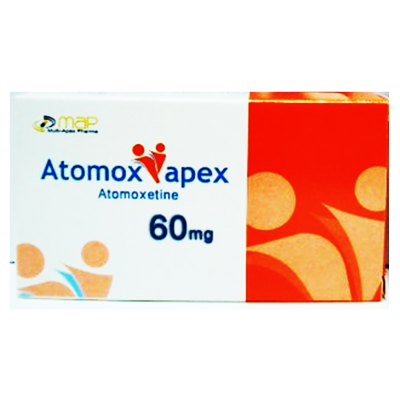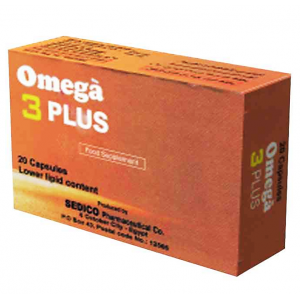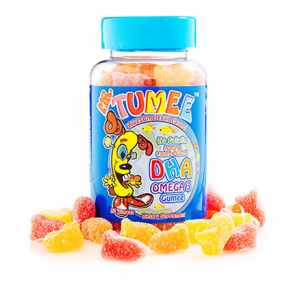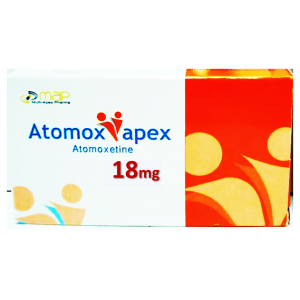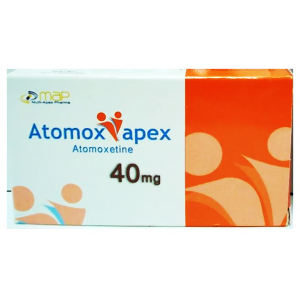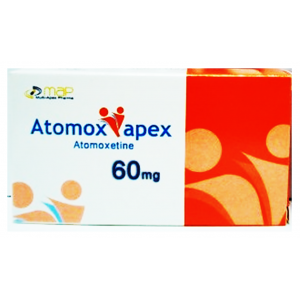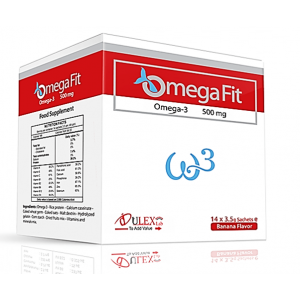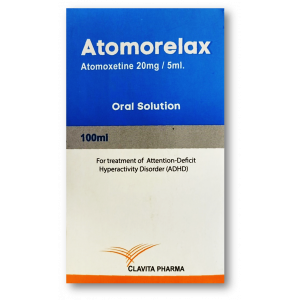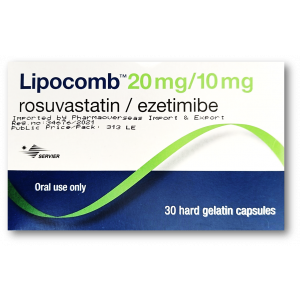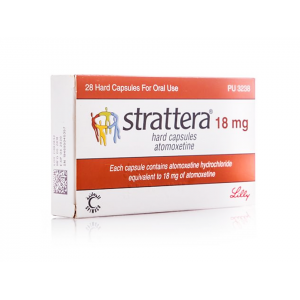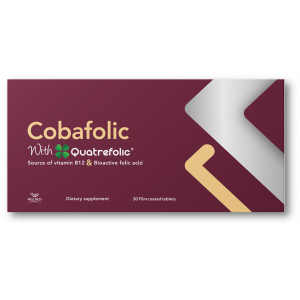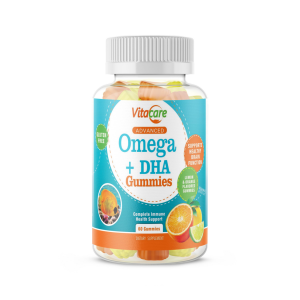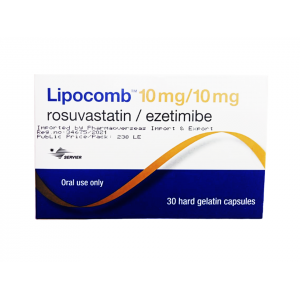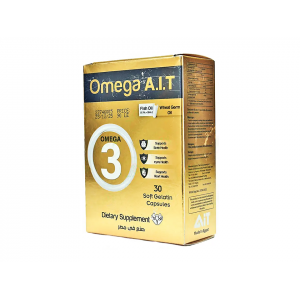- Anti-hestaminic & Respiratory Drugs (20)
- Anti-inflammatory Drugs (192) +-
- Baby & Mom (1318) +-
- Baby & Mom > Bath, skin & Hair > Skin Care > wibes (52)
- Beauty (3017) +-
- Beauty > Skin Care > whitening (302)
- Chemotherapy & Immune Response (882) +-
- Chemotherapy & Immune Response > ANTI-FUNGAL (11)
- Chemotherapy & Immune Response > Chemotherapeutic Agents > Hormone Antagonists >Enzyme Inhibitors (289)
- CIRCULATORY DISTURBANCE AGENTS (24)
- Diet & Fitness Products (281) +-
- DRUG AFFECTING CENTRAL NERVOUS SYSTEM (191)
- HEMATOLOGY (39)
-
Medical Supplies (503)
+-
- Chemicals & Disinfectants (19)
- Dental Supplies (31)
- Devices & Instruments (10)
- Diabetic Supplies (121)
- General Medical Supplies (21)
- I.V & Medical Solution (0)
- Intensive Care Unit & Anesthesia Supplies (0)
- KIDNEY UNIT SUPPLIES (21)
- Lab Supplies (3)
- Miscellaneous (21)
- Neonatal Unit Supplies (0)
- Operation Room Supplies (2)
- Sanitary (5)
- Sterilization Supplies (0)
- Surgical Sutures (4)
- Syringes (3)
-
Medicines & Health (2650)
+-
- Allergy & Sinus (95)
- Children's Health Care (54)
- Cough, Cold & Flu (277)
- Digestive Health & Nausea (225)
- Ear, Nose & Throat Care (179)
- Eye Care (120)
- Feminine Care (325)
- Foot Care (9)
- Orthopaedic Appliances (0)
- Pain Relief & Management (237)
- Pill Organizer (2)
- Skin Treatments (820)
- Sleep & Snoring Aids (2)
- Support & Braces (8)
- Medicines & health > Gout releif (42)
- Natural & Organic Products (81) +-
- OTC > Analgesics > Anti-inflammatory Drugs (44)
-
Personal Care (3258)
+-
- Bath & Body (271)
- Deodorant & Anti-perspirants (190)
- Ear, Nose & Throat Care (175)
- Eye Care (127)
- Feminine Care (374)
- Foot Care (17)
- Hair Care (471)
- Home Tests & Monitorings (14)
- Incontinence (7)
- Lip Care (22)
- Massage & Relaxation (17)
- Natural & Organic Personal Care (7)
- Oral Care (88)
- Pregnancy & Fertility (64)
- Shaving & Grooming (65)
- Sun Care (79)
-
Prescription Drugs (2885)
+-
- Analgesics (181)
- Cardiovascular System (374)
- Drugs Affecting Musculoskeletal System (65)
- Drugs Used In Infections (56)
- Ear & Nose Drugs (2)
- Endocrine System (176)
- Gastrointestinal Tract (242)
- Gastrointestinal Tract > Hepatology > Liver treatment (61)
- GYNECOLOGY (2)
- Miscellaneous (11)
- NEPHROLOGY > URINARY SYSTEM > RENAL DISORDERS > URINARY TRACT DISORDERS (46)
- NEUROLOGY (222)
- Nutrients & Blood Electrolytes (2)
- Respiratory System (154)
- SKIN > NAILS > HAIR > TOPICAL PREPARATIONS (83)
- Vaccines (1)
- Prescription drugs > Cardiovascular system > Anti-hypertension drugs (242)
- Sexual Wellness (301) +-
- Vitamins & Minerals Supplements (1203) +-
Ex Tax: 300EGP
Example
You can return the product within 14 days of purchase.
ReturnsYou can return the product within 14 days of purchase.

Atomox apex 60 mg ( Atomoxetine ) 30 capsules
WHAT IS ATOMOX APEX?
Atomox Apex is used to treat attention-deficit hyperactivity disorder (ADHD) in children, teenagers, and adults. It belongs to the group of medicines called selective norepinephrine reuptake inhibitors.
Atomox Apex works in the brain to increase attention and decrease restlessness in people who are hyperactive, have problems with concentration, or are easily distracted. Atomox Apex may be used as part of a treatment program that includes social, educational, and psychologic treatment.
Atomox Apex is available only with your doctor's prescription.
ATOMOX APEX INDICATIONS:
Attention-Deficit/Hyperactivity Disorder (ADHD)
Atomox Apex is indicated for the treatment of Attention-Deficit/Hyperactivity Disorder (ADHD).
The efficacy of Atomox Apex Capsules was established in seven clinical trials in outpatients with ADHD: four 6 to 9-week trials in pediatric patients (ages 6 to 18), two 10-week trial in adults, and one maintenance trial in pediatrics (ages 6 to 15).
Diagnostic Considerations
A diagnosis of ADHD (DSM-IV) implies the presence of hyperactive-impulsive or inattentive symptoms that cause impairment and that were present before age 7 years. The symptoms must be persistent, must be more severe than is typically observed in individuals at a comparable level of development, must cause clinically significant impairment, e.g., in social, academic, or occupational functioning, and must be present in 2 or more settings, e.g., school (or work) and at home. The symptoms must not be better accounted for by another mental disorder.
The specific etiology of ADHD is unknown, and there is no single diagnostic test. Adequate diagnosis requires the use not only of medical but also of special psychological, educational, and social resources. Learning may or may not be impaired. The diagnosis must be based upon a complete history and evaluation of the patient and not solely on the presence of the required number of DSM-IV characteristics.
For the Inattentive Type, at least 6 of the following symptoms must have persisted for at least 6 months: lack of attention to details/careless mistakes, lack of sustained attention, poor listener, failure to follow through on tasks, poor organization, avoids tasks requiring sustained mental effort, loses things, easily distracted, forgetful. For the Hyperactive-Impulsive Type, at least 6 of the following symptoms must have persisted for at least 6 months: fidgeting/squirming, leaving seat, inappropriate running/climbing, difficulty with quiet activities, “on the go,” excessive talking, blurting answers, can't wait turn, intrusive. For a Combined Type diagnosis, both inattentive and hyperactive-impulsive criteria must be met.
Need for Comprehensive Treatment Program
Atomox Apex is indicated as an integral part of a total treatment program for ADHD that may include other measures (psychological, educational, social) for patients with this syndrome. Drug treatment may not be indicated for all patients with this syndrome. Drug treatment is not intended for use in the patient who exhibits symptoms secondary to environmental factors and/or other primary psychiatric disorders, including psychosis. Appropriate educational placement is essential in children and adolescents with this diagnosis and psychosocial intervention is often helpful. When remedial measures alone are insufficient, the decision to prescribe drug treatment medication will depend upon the physician's assessment of the chronicity and severity of the patient's symptoms.
HOW SHOULD I USE ATOMOX APEX?
Use Atomox Apex as directed by your doctor. Check the label on the medicine for exact dosing instructions.
Atomox Apex comes with an extra patient information sheet called a Medication Guide. Read it carefully. Read it again each time you get Atomox Apex refilled.
Take Atomox Apex by mouth with or without food. If stomach upset occurs, take with food to reduce stomach irritation.
Swallow Atomox Apex whole. Do not break, crush, chew, or open the capsules. Tell your doctor if you cannot swallow Atomox Apex whole.
Taking Atomox Apex at the same time each day will help you remember to take it.
Continue to take Atomox Apex even if you feel well. Do not miss any doses.
If you miss a dose of Atomox Apex, take it as soon as possible. If it is almost time for your next dose, skip the missed dose and go back to your regular dosing schedule. Do not take 2 doses at once.
Ask your health care provider any questions you may have about how to use Atomox Apex.
USES OF ATOMOX APEX IN DETAILS:
Atomox Apex is used to help control the symptoms of attention deficit hyperactivity disorder (difficulty staying focused, paying attention, controlling behavior, and over-activity).
ATOMOX APEX DESCRIPTION
Each Atomox Apex 10 mg, 18 mg, 25 mg, 40 mg, or 60 mg capsule contains Atomoxetine hydrochloride equivalent to 10 mg, 18 mg, 25 mg, 40 mg, or 60 mg of Atomox Apex.
Excipients/Inactive Ingredients: The capsules contain: Starch pregelatinised, and dimeticone.
Capsule Shell: Sodium lauryl sulfate, gelatin, edible black ink SW-9008 or edible black ink SW-9010 (containing shellac, dehydrated alcohol, isopropyl alcohol, butyl alcohol, propylene glycol, purified water, strong ammonia solution, potassium hydroxide, black iron oxide E172).
Capsule Shell Cap Colourants: 10 mg: Titanium dioxide E171.
18 mg: Yellow iron oxide E172.
25 mg, 40 mg and 60 mg: FD&C blue 2 (indigo carmine) E132 and titanium dioxide E171.
Capsule Shell Body Colourants: 10 mg, 18 mg and 25 mg: Titanium dioxide E171.
40 mg: FD&C blue 2 (indigo carmine) E132 and titanium dioxide E171.
60 mg: Yellow iron oxide E172.
ATOMOX APEX DOSAGE:
Children and Adolescents up to 70 kg Body Weight: Atomox Apex should be initiated at a total daily dose of approximately 0.5 mg/kg and increased after a minimum of 3 to 7 days to a target total daily dose of approximately 1.2 mg/kg administered either as a single daily dose in the morning or as evenly divided doses in the morning and late afternoon/early evening. After 2 to 4 additional weeks, the total daily dose may be increased to a maximum of 1.8 mg/kg in patients who have not achieved an optimal response.
The maximum recommended total daily dose in children and adolescents is 1.8 mg/kg or 120 mg, whichever is less.
Children and Adolescents over 70 kg Body Weight and Adults: Atomox Apex should be initiated at a total daily dose of 40 mg and increased after a minimum of 3 days to a target total daily dose of approximately 80 mg administered either as a single daily dose in the morning or as evenly divided doses in the morning and late afternoon/early evening. After 2 to 4 additional weeks, the dose may be increased to a maximum of 120 mg in patients who have not achieved an optimal response. The maximum recommended total daily dose in children and adolescents over 70 kg and adults is 120 mg.
Atomox Apex may be taken with or without food. The safety of single doses over 120 mg and total daily doses above 150 mg have not been systematically evaluated.
Pediatrics: The safety and efficacy of Atomox Apex in pediatric patients less than 6 years of age have not been established. The efficacy of Atomox Apex beyond 18 weeks and safety of Atomox Apex beyond 2 years of treatment have not been systematically evaluated.
Elderly: The safety and efficacy of Atomox Apex in geriatric patients have not been established.
Hepatic Impairment: For those ADHD patients who have hepatic insufficiency (HI), dosage adjustment is recommended as follows: For patients with moderate HI (Child-Pugh Class B), initial and target doses should be reduced to 50% of the normal dose (for patients without HI). For patients with severe HI (Child-Pugh Class C), initial dose and target doses should be reduced to 25% of usual dose.
Renal Impairment: Subjects with end stage renal disease had higher systemic exposure to Atomox Apex than healthy subjects (about a 65% increase), but there was no difference when exposure was corrected for mg/kg dose. Atomox Apex can therefore be administered to ADHD patients with end stage renal disease or lesser degrees of renal insufficiency using the normal dosing regimen. Atomox Apex may exacerbate hypertension in patients with end stage renal disease.
ATOMOX APEX INTERACTIONS
CYP2D6 Activity and Atomox Apex Plasma Concentration: Atomox Apex is primarily metabolized by the CYP2D6 pathway to 4-hydroxyatomoxetine. In extensive metabolizer patients, inhibitors of CYP2D6 increase Atomox Apex steady-state plasma concentrations to exposures similar to those observed in poor metabolizer patients. Dosage adjustment of Atomox Apex in extensive metabolizers maybe necessary when co-administered with CYP2D6 inhibitors, e.g., paroxetine, fluoxetine, and quinidine. In vitro studies suggest that coadministration of cytochrome P450 inhibitors to poor metabolizers will not increase the plasma concentrations of Atomox Apex.
Effect of Atomox Apex on P-450 Enzymes: Atomox Apex did not cause clinically important inhibition or induction of cytochrome P450 enzymes, including CYP1A2, CYP3A, CYP2D6, and CYP2C9.
Albuterol: Atomox Apex should be administered with caution to patients being treated with systematically-administered (oral or intravenous) albuterol (or other beta-2 agonists) because the action of albuterol on the cardiovascular system can be potentiated. In adult volunteers of a clinical pharmacology study, the effects on blood pressure and heart rate of a standard inhaled dose of albuterol (200 mcg) are not clinically significant compared to iv administration and not increased by co-administration of Atomox Apex (80 mg QD for 5 days). Heart rate after multiple inhalations of albuterol (800 mcg) was similar in the presence or absence of Atomox Apex.
Methylphenidate: Coadministration of methylphenidate with Atomox Apex did not increase cardiovascular effects beyond those seen with methylphenidate alone.
Drugs Highly Bound to Plasma Protein: In vitro drug-displacement studies were conducted with Atomox Apex and other highly bound drugs at therapeutic concentrations. Atomox Apex did not affect the binding of warfarin, acetylsalicylic acid, phenytoin, or diazepam to human albumin. Similarly, these compounds did not affect the binding of Atomox Apex to human albumin.
Drugs that Affect Gastric pH: Drugs that elevate gastric pH (magnesium hydroxide/aluminum hydroxide, omeprazole) had no effect on Atomox Apex bioavailability.
Monoamine oxidase inhibitors: See Contraindications.
Pressor Agents: Because of possible effects on blood pressure, Atomox Apex should be used cautiously with pressor agents.
Drugs that Affect Norepinephrine: Drugs that affect norepinephrine should be used cautiously when co- administered with Atomox Apex because of the potential for additive or synergistic pharmacologic effect.
ATOMOX APEX SIDE EFFECTS
See also:
What are the possible side effects of Atomox Apex?
Clinical Trials Experience
Atomox Apex was administered to 5382 children or adolescent patients with ADHD and 1007 adults with ADHD in clinical studies. During the ADHD clinical trials, 1625 children and adolescent patients were treated for longer than 1 year and 2529 children and adolescent patients were treated for over 6 months.
Because clinical trials are conducted under widely varying conditions, adverse reaction rates observed in the clinical trials of a drug cannot be directly compared to rates in the clinical trials of another drug and may not reflect the rates observed in practice.
Child And Adolescent Clinical Trials
Reasons for discontinuation of treatment due to adverse reactions in child and adolescent clinical trials - In acute child and adolescent placebo-controlled trials, 3.0% (48/1613) of Atomox Apex subjects and 1.4% (13/945) placebo subjects discontinued for adverse reactions. For all studies, (including openlabel and long-term studies), 6.3% of extensive metabolizer (EM) patients and 11.2% of poor metabolizer (PM) patients discontinued because of an adverse reaction. Among Atomox Apex-treated patients, irritability (0.3%, N=5); somnolence (0.3%, N=5); aggression (0.2%, N=4); nausea (0.2%, N=4); vomiting (0.2%, N=4); abdominal pain (0.2%, N=4); constipation (0.1%, N=2); fatigue (0.1%, N=2); feeling abnormal (0.1%, N=2); and headache (0.1%, N=2) were the reasons for discontinuation reported by more than 1 patient.
Seizures - Atomox Apex has not been systematically evaluated in pediatric patients with seizure disorder as these patients were excluded from clinical studies during the product's premarket testing. In the clinical development program, seizures were reported in 0.2% (12/5073) of children whose average age was 10 years (range 6 to 16 years). In these clinical trials, the seizure risk among poor metabolizers was 0.3% (1/293) compared to 0.2% (11/4741) for extensive metabolizers.
Commonly observed adverse reactions in acute child and adolescent, placebo-controlled trials - Commonly observed adverse reactions associated with the use of Atomox Apex (incidence of 2% or greater) and not observed at an equivalent incidence among placebo-treated patients (Atomox Apex incidence greater than placebo) are listed in Table 2. Results were similar in the BID and the QD trial except as shown in Table 3, which shows both BID and QD results for selected adverse reactions based on statistically significant Breslow-Day tests. The most commonly observed adverse reactions in patients treated with Atomox Apex (incidence of 5% or greater and at least twice the incidence in placebo patients, for either BID or QD dosing) were: nausea, vomiting, fatigue, decreased appetite, abdominal pain, and somnolence.
Additional data from ADHD clinical trials (controlled and uncontrolled) has shown that approximately 5 to 10% of pediatric patients experienced potentially clinically important changes in heart rate ( ≥ 20 beats per min) or blood pressure ( ≥ 15 to 20 mm Hg).
Table 2: Common Treatment–Emergent Adverse Reactions Associated with the Use of Atomox Apex in Acute (up to 18 weeks ) Child and Adolescent Trials
Adverse ReactionBased on total number of females (Atomox Apex, N=754; placebo, N=691).
The following adverse events occurred in at least 2% of adult CYP2D6 poor metaboliser (PM) patients and were statistically significantly more frequent in PM patients compared to CYP2D6 extensive metaboliser (EM) patients: vision blurred (4% of PMs, 1% of EMs); dry mouth (35% of PMs, 17% of EMs); constipation (11% of PMs, 7% of EMs); feeling jittery (5% of PMs, 2% of EMs); decreased appetite (23% of PMs, 15% of EMs); tremor (5% of PMs, 1% of EMs); insomnia (19% of PMs, 11% of EMs); sleep disorder (7% of PMs, 3% of EMs); middle insomnia (5% of PMs, 3% of EMs); terminal insomnia (3% of PMs, 1% of EMs); urinary retention (6% of PMs, 1% of EMs); erectile dysfunction (21% of PMs, 9% of EMs); ejaculation disorder (6% of PMs, 2% of EMs); hyperhidrosis (15% of PMs, 7% of EMs); peripheral coldness (3% of PMs, 1% of EMs).
Male and female sexual dysfunction - Atomox Apex appears to impair sexual function in some patients. Changes in sexual desire, sexual performance, and sexual satisfaction are not well assessed in most clinical trials because they need special attention and because patients and physicians may be reluctant to discuss them. Accordingly, estimates of the incidence of untoward sexual experience and performance cited in product labeling are likely to underestimate the actual incidence. Table 4 above displays the incidence of sexual side effects reported by at least 2% of adult patients taking Atomox Apex in placebo-controlled trials.
There are no adequate and well-controlled studies examining sexual dysfunction with Atomox Apex treatment. While it is difficult to know the precise risk of sexual dysfunction associated with the use of Atomox Apex, physicians should routinely inquire about such possible side effects.
Postmarketing Spontaneous Reports
The following adverse reactions have been identified during post approval use of Atomox Apex. Unless otherwise specified, these adverse reactions have occurred in adults and children and adolescents. Because these reactions are reported voluntarily from a population of uncertain size, it is not always possible to reliably estimate their frequency or establish a causal relationship to drug exposure.
Cardiovascular system - QT prolongation, syncope.
Peripheral vascular effects - Raynaud's phenomenon.
General disorders and administration site conditions - Lethargy.
Musculoskeletal System - Rhabdomyolysis.
Nervous system disorders - Hypoaesthesia; paraesthesia in children and adolescents; sensory disturbances; tics.
Psychiatric disorders - Depression and depressed mood; anxiety, libido changes.
Seizures - Seizures have been reported in the postmarketing period. The postmarketing seizure cases include patients with pre-existing seizure disorders and those with identified risk factors for seizures, as well as patients with neither a history of nor identified risk factors for seizures. The exact relationship between Atomox Apex and seizures is difficult to evaluate due to uncertainty about the background risk of seizures in ADHD patients.
Skin and subcutaneous tissue disorders - Hyperhidrosis.
Urogenital system - Male pelvic pain; urinary hesitation in children and adolescents; urinary retention in children and adolescents.
ATOMOX APEX CONTRAINDICATIONS
Hypersensitivity
Atomox Apex is contraindicated in patients known to be hypersensitive to Atomox Apex or other constituents of the product.
Monoamine Oxidase Inhibitors (MAOI)
Atomox Apex should not be taken with an MAOI, or within 2 weeks after discontinuing an MAOI. Treatment with an MAOI should not be initiated within 2 weeks after discontinuing Atomox Apex. With other drugs that affect brain monoamine concentrations, there have been reports of serious, sometimes fatal reactions (including hyperthermia, rigidity, myoclonus, autonomic instability with possible rapid fluctuations of vital signs, and mental status changes that include extreme agitation progressing to delirium and coma) when taken in combination with an MAOI. Some cases presented with features resembling neuroleptic malignant syndrome. Such reactions may occur when these drugs are given concurrently or in close proximity.
Narrow Angle Glaucoma
In clinical trials, Atomox Apex use was associated with an increased risk of mydriasis and therefore its use is not recommended in patients with narrow angle glaucoma.
Pheochromocytoma
Serious reactions, including elevated blood pressure and tachyarrhythmia, have been reported in patients with pheochromocytoma or a history of pheochromocytoma who received Atomox Apex. Therefore, Atomox Apex should not be taken by patients with pheochromocytoma or a history of pheochromocytoma.
Severe Cardiovascular Disorders
Atomox Apex should not be used in patients with severe cardiac or vascular disorders whose condition would be expected to deteriorate if they experience increases in blood pressure or heart rate that could be clinically important (for example, 15 to 20 mm Hg in blood pressure or 20 beats per minute in heart rate)..
Write a review
Your Name:Your Review: Note: HTML is not translated!
Rating: Bad Good
Enter the code in the box below:

